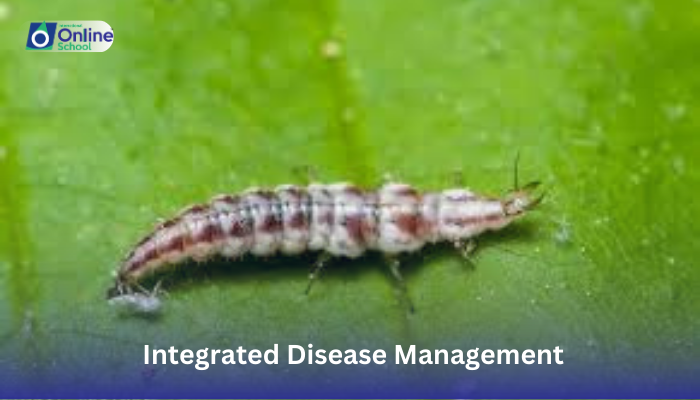
Learning Outcomes:
i. Define integrated disease management (IDM) and its key principles.
ii. Explain the different components of IDM, highlighting their role in disease prevention and control.
iii. Understand the benefits of using IDM compared to traditional, single-method approaches.
Introduction:
Imagine you're facing a mischievous enemy, a tiny but mighty bug that wreaks havoc on your garden. Pesticides might seem like the fastest solution, but what if there were a smarter way, a way to fight back without harming your beloved plants or the environment? This is the philosophy behind integrated disease management (IDM), a holistic approach that combines different strategies to combat disease in a sustainable and effective way. Today, we embark on a journey into the world of IDM, uncovering its secrets and understanding how it can help us win the battle against disease, both in our gardens and beyond.
i. The Art of Collaboration: What is IDM?
IDM is not a single weapon, but an arsenal of tools used together to manage disease. It promotes a comprehensive approach that considers the entire ecosystem, including the host plant, the disease-causing agent (pathogen), the environment, and other beneficial organisms. Unlike traditional methods that often rely heavily on pesticides, IDM focuses on prevention and long-term control rather than just short-term fixes.
ii. The Weapons in Our Arsenal: Components of IDM:
Preventive measures: These strategies aim to prevent disease outbreaks before they even occur. Examples include using pest-resistant plant varieties, practicing good sanitation, and promoting biodiversity in the ecosystem.
Cultural practices: These involve modifying the environment to make it less favorable for the pathogen. Examples include crop rotation, proper irrigation, and weed control.
Biological control: This involves using natural enemies of the pathogen, such as beneficial insects or microorganisms, to suppress its population.
Minimal chemical use: Pesticides are used as a last resort, and only when absolutely necessary. When used, IDM emphasizes selective pesticides that target specific pests while minimizing harm to the environment and beneficial organisms.
iii. A Winning Strategy: Benefits of IDM:
Sustainable and environmentally friendly: IDM reduces reliance on harmful chemicals, protecting the environment and promoting biodiversity.
More effective disease control: By addressing the root causes of disease, IDM can provide long-term control and prevent the development of resistance in pathogens.
Economical: IDM can be more cost-effective in the long run, reducing the need for expensive pesticides and promoting healthier crops.
Promotes a safer food supply: Minimizing pesticide use leads to healthier food with lower residues of harmful chemicals.
IDM is not just a technique; it's a philosophy, a way of thinking about disease control that prioritizes harmony and balance within the ecosystem. By understanding its principles and embracing its diverse tools, we can move away from a war mentality against pests and adopt a collaborative approach, where we work with nature to create a healthier world for plants, people, and the planet. So, the next time you face a pesky bug, remember, you have an arsenal at your disposal. Choose IDM, and let's work together to build a future where disease doesn't win, but nature thrives.